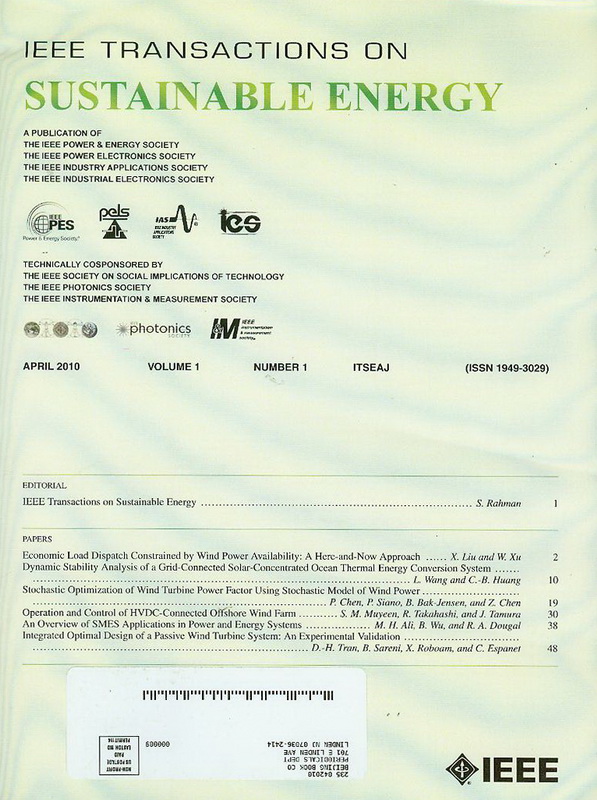在各种调度方案和电网强度下提高随网变流器稳定性的VSG BESS优化尺寸
IF 10
1区 工程技术
Q1 ENERGY & FUELS
引用次数: 0
摘要
随着可再生能源整合的增加,确保弱电网中基于逆变器的资源(ibr)的稳定性至关重要,因为电网跟随(GFL)变流器在这种条件下经常变得不稳定。集成虚拟同步发电机(VSG)电池已显示出提高GFL稳定性的潜力,但确定稳定所需的VSG的最佳尺寸仍然是一个悬而未决的问题。现有的研究通常依赖于小信号或阻抗模型进行稳定性分析,这些模型仅在单个工作点有效,而没有考虑全范围的运行条件,包括各种调度方案和电网强度。本文通过提出一种新颖的方法来可视化系统的稳定工作区域,从而解决了这一差距,提供了对各种实际功率和电网阻抗变化的稳定边界的见解。此外,它引入了一个最佳的VSG电池尺寸策略,考虑到这些变化,确保稳定性,同时最小化VSG容量。通过全面的PSCAD仿真验证了该策略的有效性,证明了其在实际功率和电网阻抗工作点范围内的可靠性。本文章由计算机程序翻译,如有差异,请以英文原文为准。
Optimal VSG BESS Sizing for Improving Grid-Following Converter Stability Under Various Dispatch Scenarios and Grid Strengths
As renewable energy integration increases, ensuring stability of Inverter-Based Resources (IBRs) in weak grids is crucial, as grid-following (GFL) converters often become unstable under such conditions. Integrating virtual synchronous generator (VSG) batteries has shown potential to improve GFL stability, but determining the optimal size of the VSG required for stability remains an open question. Existing research typically relies on small-signal or impedance models for stability analysis, which are only valid at a single operating point and do not consider the full range of operating conditions, including various dispatch scenarios and grid strengths. This paper addresses this gap by proposing a novel methodology to visualize the system's stable operating region, offering insights into stability boundaries across various real power and grid impedance variations. Additionally, it introduces an optimal VSG battery sizing strategy that accounts for these variations, ensuring stability while minimizing VSG capacity. The strategy's effectiveness is validated through comprehensive PSCAD simulations, demonstrating its reliability across a wide range of real power and grid impedance operating points.
求助全文
通过发布文献求助,成功后即可免费获取论文全文。
去求助
来源期刊

IEEE Transactions on Sustainable Energy
ENERGY & FUELS-ENGINEERING, ELECTRICAL & ELECTRONIC
CiteScore
21.40
自引率
5.70%
发文量
215
审稿时长
5 months
期刊介绍:
The IEEE Transactions on Sustainable Energy serves as a pivotal platform for sharing groundbreaking research findings on sustainable energy systems, with a focus on their seamless integration into power transmission and/or distribution grids. The journal showcases original research spanning the design, implementation, grid-integration, and control of sustainable energy technologies and systems. Additionally, the Transactions warmly welcomes manuscripts addressing the design, implementation, and evaluation of power systems influenced by sustainable energy systems and devices.
 求助内容:
求助内容: 应助结果提醒方式:
应助结果提醒方式:


